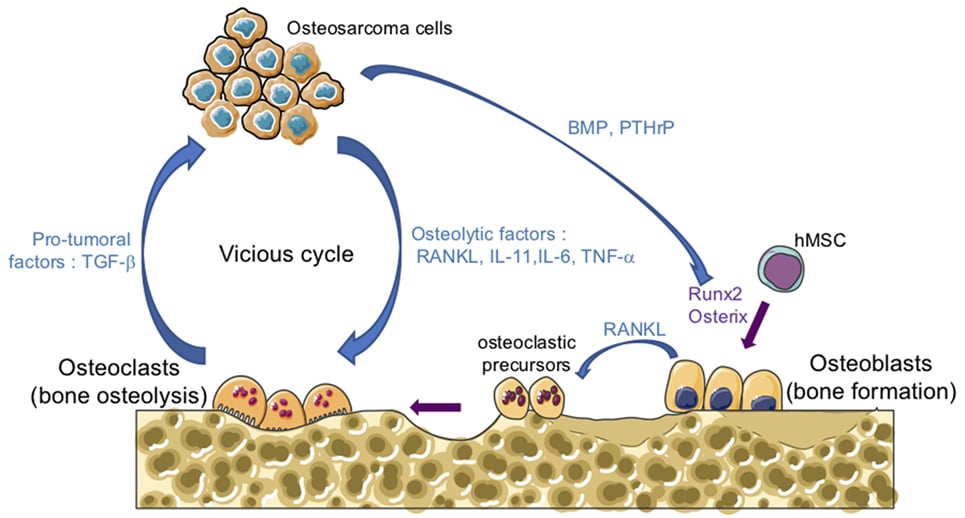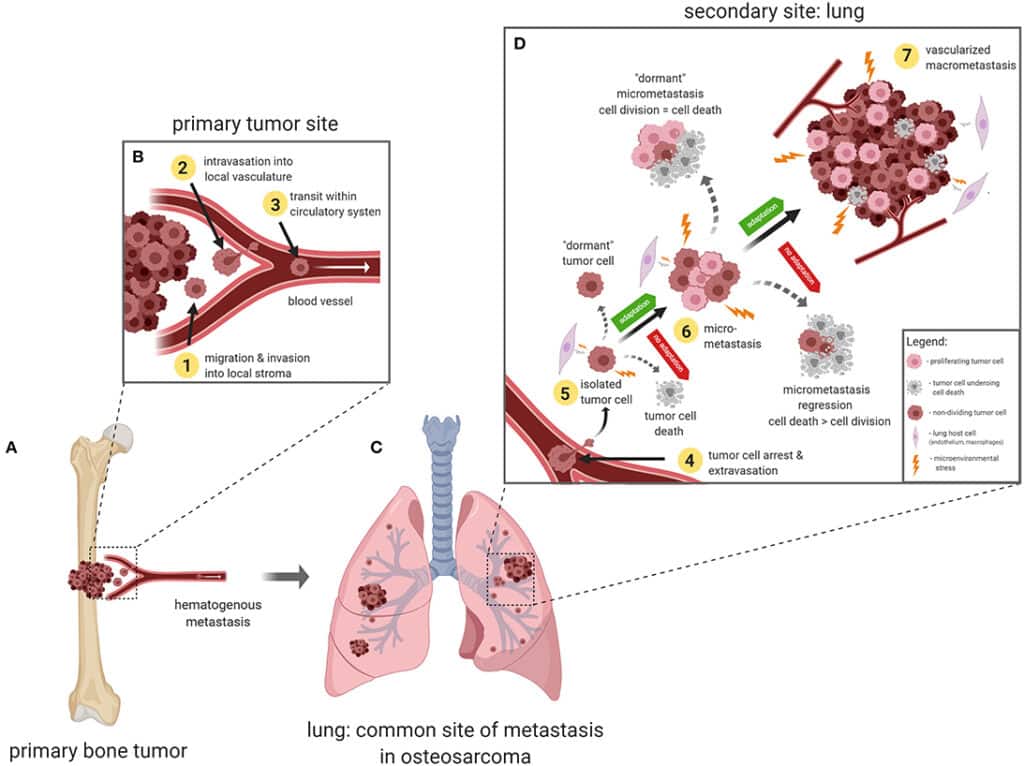Bone cancer, specifically osteosarcoma, is a rare but serious condition that primarily affects children and young adults. Often abbreviated as OS, osteosarcoma originates in the bone tissue and can spread to other parts of the body if left untreated. This article delves into the various aspects of this disease, including its types, causes, methods of diagnosis, and available treatment options.

Understanding Osteosarcoma
Osteosarcoma is a type of cancer that begins in the cells responsible for forming bones. It typically develops in areas where bones are growing rapidly, such as the ends of long bones. The most common sites include the arms, legs, and pelvis. While it predominantly affects adolescents and young adults, it can occur at any age.
Types of Osteosarcoma
There are several types of osteosarcoma, each classified based on its characteristics and location. Below are some of the most common types:
- Conventional Osteosarcoma: This is the most prevalent form and usually occurs in the long bones of the arms and legs.
- Parosteal Osteosarcoma: A slower-growing type that forms on the surface of the bone rather than inside it.
- Periosteal Osteosarcoma: Found on the outer surface of the bone, often affecting younger individuals.
- High-Grade Surface Osteosarcoma: Similar to conventional osteosarcoma but located on the surface of the bone.
- Secondary Osteosarcoma: Develops as a result of other conditions, such as Paget’s disease or radiation exposure.
Risk Factors and Causes
The exact cause of osteosarcoma remains unknown, but researchers have identified several risk factors that may increase the likelihood of developing the disease. These include:
- Age and Growth Spurts: Adolescents experiencing rapid bone growth are more susceptible.
- Genetic Disorders: Conditions like Li-Fraumeni syndrome, hereditary retinoblastoma, and Rothmund-Thomson syndrome are linked to a higher risk.
- Prior Radiation Therapy: Individuals who have undergone radiation treatment for other cancers may develop osteosarcoma later in life.
- Paget’s Disease: A chronic bone disorder that increases the risk of bone cancer.
Diagnosis of Osteosarcoma
Early detection and accurate diagnosis are crucial for effective treatment. Doctors use a combination of physical examinations, imaging tests, and biopsies to confirm the presence of osteosarcoma.
Symptoms to Watch For
Osteosarcoma often presents with symptoms that may initially be mistaken for less serious conditions. Common signs include:
- Pain in the affected bone, which may worsen at night or during activity.
- Swelling or a lump near the site of pain.
- Limited range of motion if the tumor is near a joint.
- Fatigue or unexplained weight loss in advanced stages.
Diagnostic Procedures
To diagnose osteosarcoma, healthcare providers rely on the following methods:
- X-rays: The first step in identifying abnormalities in the bone structure.
- Magnetic Resonance Imaging (MRI): Provides detailed images to assess the size and extent of the tumor.
- Computed Tomography (CT) Scans: Used to detect whether the cancer has spread to other organs, such as the lungs.
- Positron Emission Tomography (PET) Scans: Helps determine the stage of the cancer by highlighting active tumor cells.
- Biopsy: A surgical procedure to remove a small sample of tissue for laboratory analysis. This confirms the presence of cancerous cells.
Treatment Options for Osteosarcoma
Treatment for osteosarcoma depends on factors such as the size and location of the tumor, the stage of the cancer, and the patient’s overall health. A multidisciplinary approach involving oncologists, surgeons, and radiologists is often employed to provide comprehensive care.
Surgery
Surgical intervention is a cornerstone of osteosarcoma treatment. The primary goal is to remove the tumor while preserving as much function as possible. There are two main types of surgery:
- Limb-Sparing Surgery: Involves removing the tumor and a margin of healthy tissue while reconstructing the affected area with prosthetics or bone grafts.
- Amputation: Reserved for cases where the tumor is too large or located in a critical area, making limb preservation impossible.
Chemotherapy
Chemotherapy uses powerful drugs to destroy cancer cells. It is often administered before surgery (neoadjuvant chemotherapy) to shrink the tumor and after surgery (adjuvant chemotherapy) to eliminate any remaining cancer cells. Common chemotherapy drugs include:
- Methotrexate
- Doxorubicin
- Cisplatin
Radiation Therapy
While radiation therapy is not commonly used as a primary treatment for osteosarcoma, it may be recommended in certain cases. For example, it can be used to target tumors that cannot be surgically removed or to alleviate symptoms in advanced stages.
Targeted Therapy
Targeted therapy involves using drugs that specifically attack cancer cells without harming normal cells. Although still under investigation for osteosarcoma, targeted therapies hold promise for improving outcomes in patients who do not respond well to traditional treatments.
Clinical Trials
Participating in clinical trials provides access to cutting-edge treatments that are not yet widely available. These studies aim to test new drugs, combinations of therapies, or innovative surgical techniques to improve survival rates and quality of life for patients with osteosarcoma.
Living with Osteosarcoma
A diagnosis of osteosarcoma can be overwhelming, but advancements in medical science offer hope for recovery. Patients and their families should work closely with healthcare teams to explore all available options and make informed decisions about treatment.
Emotional and Psychological Support
Coping with cancer requires more than just medical intervention. Emotional and psychological support plays a vital role in helping patients and their loved ones navigate the challenges of the disease. Resources such as counseling, support groups, and educational materials can provide valuable assistance during this difficult time.
Rehabilitation and Follow-Up Care
After completing treatment, patients may need rehabilitation to regain strength and mobility. Physical therapy, occupational therapy, and regular follow-up appointments are essential components of long-term care. Monitoring for recurrence or complications is also critical to ensure early intervention if needed.
Lifestyle Adjustments
Making healthy lifestyle choices can aid in recovery and reduce the risk of complications. These include maintaining a balanced diet, staying physically active within safe limits, avoiding tobacco and excessive alcohol consumption, and adhering to prescribed medications and therapies.





